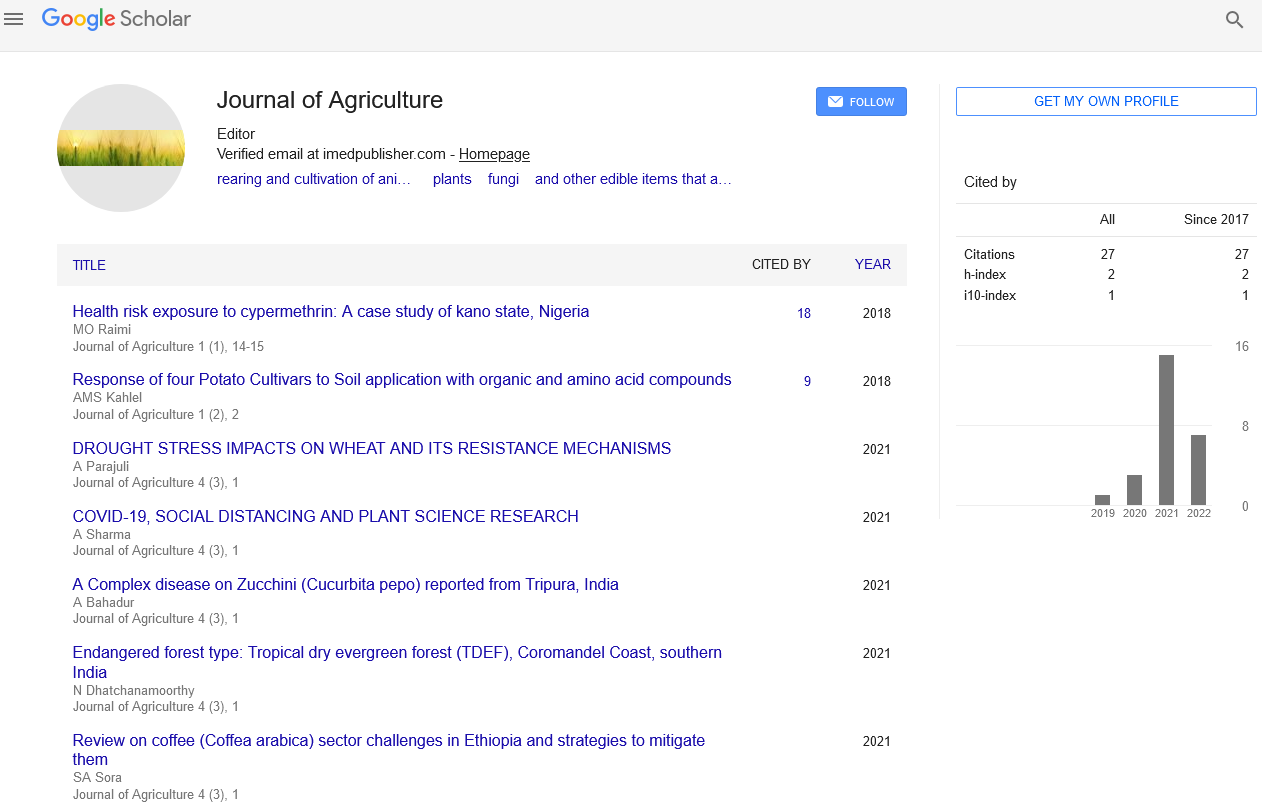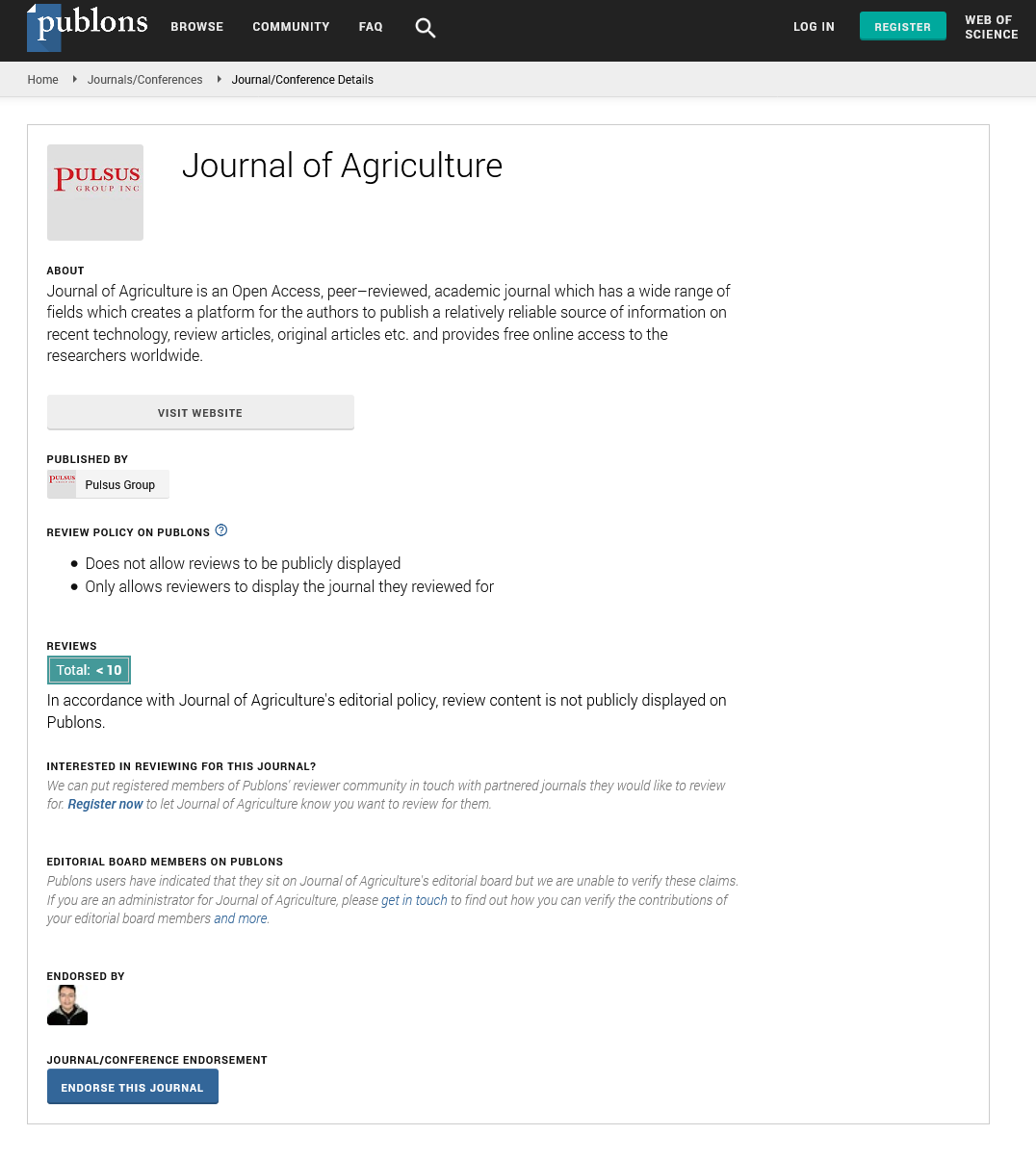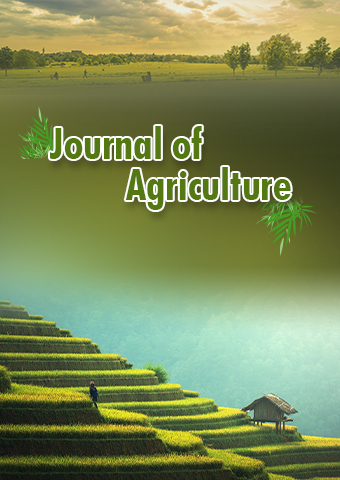Editorial - Journal of Agriculture (2023) Volume 6, Issue 4
Aquatic Plants and Algae in Protected Bodies of Freshwater: Understanding Biodiversity and Ecological Importance
Prajal Pradhan*
College of Forestry, Nanjing Forestry University, China
College of Forestry, Nanjing Forestry University, China
E-mail: Prajalpradhan6@gmail.com
Received: 01-Aug-2023, Manuscript No. jagri-23-108625; Editor assigned: 03-Aug-2023, Pre-QC No. jagri-23-108625 (PQ); Reviewed: 17- Aug-2023, QC No. jagri-23-108625; Revised: 22-Aug-2023, Manuscript No. jagri-23-108625 (R); Published: 29-Aug-2023; DOI: 10.37532/ jagri.2023.6(4).106-108
Abstract
Aquatic plants and algae play a crucial role in the biodiversity and ecological stability of protected bodies of freshwater, including lakes, ponds, and wetlands. This study aims to explore the significance of these often-overlooked organisms and their impact on the delicate aquatic ecosystems. The first part of this research focuses on the rich biodiversity harboured by aquatic plants and algae. These organisms are essential contributors to the overall species richness of freshwater ecosystems, providing habitat, food, and shelter for a diverse array of aquatic life. By investigating their distribution and abundance, we can gain valuable insights into the health and dynamics of these protected habitats. Furthermore, this study delves into the ecological importance of aquatic plants and algae in maintaining water quality. These organisms actively contribute to the nutrient cycling and purification of freshwater systems by absorbing excess nutrients and pollutants. Additionally, they serve as oxygen producers through photosynthesis, supporting various aquatic organisms and preventing the onset of harmful algal blooms. Through an exploration of the intricate relationships between aquatic plants and algae and other members of the aquatic community, this research underscores the interconnectivity and resilience of freshwater ecosystems. The study also assesses how disturbances, such as climate change, invasive species, and human activities,can impact these delicate relationships and ecosystem balance. The research draws on various sampling methods, data analysis, and ecological modeling to comprehend the dynamics of aquatic plant and algae communities in protected freshwater bodies. By utilizing this comprehensive approach, we aim to provide valuable recommendations for conservation and management strategies, aiding in the preservation and restoration of these precious ecosystems. The study highlights the often underestimated importance of aquatic plants and algae in protected bodies of freshwater. These organisms significantly contribute to biodiversity, nutrient cycling, and ecosystem stability. As we recognize their ecological value, it becomes imperative to implement proactive conservation measures to safeguard these vital components of freshwater ecosystems for the benefit of present and future generations.
Keywords
Aquatic plants • Aquatic plants • Ecological stability • Freshwater ecosystems • Nutrient cycling
Introduction
Protected bodies of freshwater, such as lakes, rivers, and ponds, are essential ecosystems that support a diverse array of aquatic life. Among the most crucial components of these ecosystems are aquatic plants and algae. These organisms play a vital role in maintaining the health and balance of freshwater habitats. This article explores the significance of aquatic plants and algae in protected bodies of fresh water, emphasizing their biodiversity, ecological importance, and the necessity of conservation efforts to preserve these fragile ecosystems.
Biodiversity of aquatic plants and algae
Protected freshwater bodies are home to an astonishing variety of aquatic plant species, ranging from submerged plants like waterweeds and pondweeds to floating species like water lilies and lotus. These plants have adapted to survive and thrive in diverse environments, from shallow marshes to deep lakes. Their roots anchor in the sediment, while their leaves and stems extend above the water’s surface, providing critical habitats and shelter for various aquatic organisms [1].
Similarly, algae, microscopic photosynthetic organisms, are abundant in freshwater ecosystems. Ranging from single-celled phytoplankton to large, multicellular macroalgae, they are a diverse group responsible for primary production and providing the foundation for aquatic food webs.
Ecological importance of aquatic plants and algae
Oxygen production: Aquatic plants, just like their terrestrial counterparts, undergo photosynthesis, producing oxygen as a byproduct. The oxygen they release is vital for supporting fish and other aquatic organisms, maintaining the balance of dissolved oxygen levels in the water [2].
Nutrient cycling: Aquatic plants and algae play a significant role in nutrient cycling within freshwater ecosystems. They absorb and assimilate nutrients like nitrogen and phosphorus, which helps prevent the over-enrichment of water bodies and the occurrence of harmful algal blooms.
Habitat and shelter: These plants create diverse microhabitats, offering shelter, breeding grounds, and nursery areas for various aquatic species, including insects, fish, amphibians, and even some reptiles [3].
Erosion control: Aquatic vegetation stabilizes shorelines and substrates, reducing erosion caused by water currents and wave action. This helps to preserve the integrity of the ecosystem and protect adjacent terrestrial habitats [4].
Food source: Many aquatic organisms, ranging from herbivores to omnivores, rely on aquatic plants and algae as a primary food source. The abundance of these plant-based food items supports the entire food chain.
Challenges and conservation
Despite their ecological importance, protected bodies of freshwater and their aquatic plant and algae populations face various challenges. Human activities, such as urbanization, pollution, and invasive species introductions, pose significant threats to these delicate ecosystems. Nutrient pollution from agricultural runoff and wastewater discharges can lead to eutrophication, causing harmful algal blooms that deplete oxygen levels and harm aquatic life [5].
Conservation efforts are crucial to safeguarding these ecosystems. Strategies may include:
Monitoring and research: Regular monitoring and research efforts are necessary to understand the health and dynamics of freshwater ecosystems, identify potential threats, and design effective conservation measures [6].
Wetland restoration: Restoring and conserving wetlands, which often act as essential nurseries for many aquatic plants and algae, can help preserve these vital habitats [7].
Invasive species management: Controlling the spread of invasive species can prevent them from outcompeting native aquatic plants and algae, disrupting the ecosystem’s balance [8].
Nutrient management: Implementing sustainable agricultural practices and improving wastewater treatment can reduce nutrient pollution and its negative impact on freshwater bodies [9, 10].
Conclusion
Aquatic plants and algae play a critical role in the health and stability of protected bodies of freshwater. Their diverse and interconnected ecological functions make them integral components of freshwater ecosystems. Recognizing their significance and implementing conservation measures are essential to ensure the continued health and vitality of these delicate environments, benefiting both the wildlife that depends on them and the communities that enjoy their natural beauty and resources.
References
- Kiran P, Adi J. Aquaculture role in global food security with nutritional value: a review.TranslAnimSci. 3(2), 903-910 (2019).
- Naylor, Rosamond L. Oil crops, aquaculture, and the rising role of demand: A fresh perspective on food security.Global Food Securit.11,17-25(2016).
- Jennings L, Simon M. Aquatic food security: insights into challenges and solutions from an analysis of interactions between fisheries, aquaculture, food safety, human health, fish and human welfare, economy and environment.Fish Fish. 17(4), 893-938 (2016).
- Khan G, Haleem AA. Plant Physiological Responses to Engineered Nanoparticles. ENPS.12 (1),85-99(2021).
- Nesar A, Thompson S, Giovanni M. Organic aquaculture productivity, environmental sustainability, and food security: insights from organic agriculture.Food Security.12, 1253-1267 (2020).
- Ask EI, Azanza RV. Advances in cultivation technology of commercial eucheumatoid species: a review with suggestions for future research.Aquac.206,257-277(2002).
- Ogello EO, Mlingi FT, Nyonje BM et al. Can integrated livestock-fish culture be a solution to East Afircan's food insecurity? A Review.African J Food Agric Nutr Dev.13 (4), 8058-8078 (2013).
- Zabrieski Z, Morrell E, Hortin J et al. Pesticidal activity of metal oxide nanoparticles on plant pathogenic isolates of Pythium.Ecotoxicology.24 (6), 1305-1314(2015).
- Shah J, Ali A. Combined effect of Bacillus fortis IAGS 223 and zinc oxide nanoparticles to alleviate cadmium phytotoxicity in Cucumis melo. Plant PhysiolBiochem. 158, 1-12(2021).
- Reverter M, Sarter S, Caruso D et al. Aquaculture at the crossroads of global warming and antimicrobial resistance. NatCommun.11(1), 1870-1879 (2020).
Indexed at, Google Scholar, Crossref
Indexed at, Google Scholar, Crossref
Indexed at, Google Scholar, Crossref
Indexed at, Google Scholar, Crossref
Indexed at, Google Scholar, Crossref


